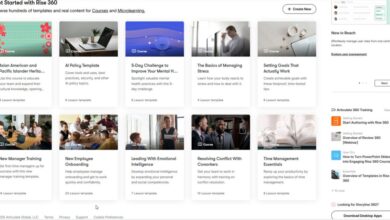Visibility Strategies for Introverts to Stand Out Professionally


If you work quietly behind the scenes or tend toward introversion, you may feel invisible in your workplace or in your field. Remote work can make this feeling even stronger. Yet visibility matters for both personal and professional reasons.
Standing out in your career can lead to advancement, new opportunities, and deep connections. For those who avoid the spotlight, this isn’t always easy. Many workplaces reward those who appear outgoing and assertive. In individualistic cultures, the social hierarchy often places greater value on extraverted behavior than on introverted behavior (McCord & Joseph, 2020).
Even researchers have the wrong idea about introversion. A review of twelve leading management journals found a positive bias toward extraversion and its socially valued traits, such as positive affect, sociability, and outgoingness. In contrast, introversion was frequently framed as “low extraversion” and often linked to negatively perceived traits (Blevins, Stackhouse, & Dionne, 2021).
Understanding Introversion
Introversion is a normal and healthy personality trait that exists on a continuum. The American Psychological Association defines introversion as a focus on inner thoughts, ideas, and feelings, along with a tendency to be reserved, quiet, and deliberate.
Introverts are not necessarily shy, and they do not dislike people. Many enjoy deep, one-on-one conversations within a close circle of friends. They tend to recharge in quiet environments away from constant stimulation.
If you identify as an introvert, bias does not have to keep you invisible. You can benefit from the rewards of visibility by leaning into your natural strengths—deep thinking, thoughtful planning, careful listening, and insightful analysis. Here are some ways to get recognized.
Leveraging Your Strengths: Content Creation
Because many introverts prefer to think before speaking, they often excel in written formats that allow time for reflection and revision. Written communication can lead to clear, well-organized messages that may have lasting impact on others.
Choose channels that let you contribute on your own pace and schedule, such as:
Writing:
- Share well-researched insights through articles or blog posts.
- Submit work to online industry publications.
- Maintain a professional website with regular articles that showcase your expertise.
- Provide consistent updates on LinkedIn.
Asynchronous Communication:
- Participate in online forums related to your field.
- Answer questions in professional groups aligned to your areas of interest.
- Curate and share relevant articles or research with brief commentary to add value.
- Collaborate on a project like building a Wiki or a shared resource library.
Digital Assets:
- Develop online tutorials or eLearning modules.
- Create instructional videos with voiceovers.
- Design job aids to help with common instructional design tasks.
- Host an audio-only podcast with structured one-on-one interviews.
These assets will continue to showcase your expertise long after they are published.
Finding Your Voice: Speaking Up
Speaking up in meetings is a powerful way to increase visibility, but it can feel challenging for introverts. Career coach Melody Wilding (2025) suggests contributing early, before anxiety has time to build. Speaking early can also make it easier to participate again later in the discussion.
Low-pressure ways to join the conversation include:
- Expanding on another person’s idea
- Asking questions that spark meaningful discussion
- Sharing relevant resources
Don’t assume your work speaks for itself. Managers are busy and their attention may be uneven. Proactively make your work visible in a way that fits how your manager operates.
- Find the best approach for keeping your manager informed of your work. Discuss how they would prefer to communicate, such as weekly email updates or brief biweekly chats, for example.
- Confirm their top priorities and the metrics that matter most.
- Agree on a simple updating structure so your emails are easy to scan or your conversations are brief.
- Provide regular updates on your projects using a schedule that makes sense to both of you.
- Regularly briefing your manager makes them look good to their boss and allows them to give credit accurately. Your updates make their job easier and makes your impact visible.
Manage speaking-up challenges with this process: In The Introverted Leader, Jennifer Kahnweiler (2025) outlines the Four P’s Process for handling anxiety-producing situations based on research with thousands of introverted leaders.
- Preparation: Take actions to get ready, such as writing thoughtful questions before a meeting.
- Presence: Engage in the moment—offer an observation or make eye contact when addressed.
- Push: Step outside your comfort zone, like starting a conversation with a coworker you don’t know.
- Practice: Look for opportunities to repeat new behaviors, such as facilitating a meeting.
Making Meaningful Connections
Introverts often excel at building strong, trust-based relationships. This trait is an asset in leadership roles and collaborative projects. Instead of viewing networking as an exhausting obligation, reframe it as an opportunity for purposeful connection.
- Prioritize meaningful conversations over meeting large numbers of people. A few strong connections can lead to lasting professional relationships.
- Focus on key relationships: Identify a small number of people whose work you admire and schedule one-on-one conversations. Prepare thoughtful questions and listen actively.
- Leverage your listening skills: Use your ability to listen deeply to ask insightful follow-up questions and strengthen rapport.
- Be selective and strategic: Attend industry events or sessions that genuinely interest you, and spend your energy on a few high-quality interactions rather than trying to meet as many people as possible.
- Be a connector: If you notice people with shared goals or interests, introduce them. This expands your network organically and is another way to be helpful
Conclusion: It’s a Continuum
You may find it helpful to see introversion as part of the extraversion–introversion continuum. Research suggests that most people fall somewhere between the extremes at the end of the continuum, leaning toward one side or the other depending on the situation (Schulthei, 2024). Many people share traits associated with introversion, such as needing quiet to recharge or feeling hesitant to speak up in large groups.
If you relate to these tendencies, choose visibility strategies that align with your strengths so you can share your expertise in authentic ways. Over time, your efforts can help you build a strong reputation, attract opportunities, and feel more connected at work and in your field.
References:
-
American Psychological Association. (n.d.). Introversion. In APA dictionary of psychology. Retrieved [August 7, 2025], from https://dictionary.apa.org/introversion
- Blevins, D., Stackhouse, M., & Dionne, S. D. (2021). Righting the balance: Understanding introverts (and extraverts) in the workplace. International Journal of Management Reviews, 24(3). https://doi.org/10.1111/ijmr.12268
-
Kahnweiler, J. (2025). The Introverted Leader: Building on Your Quiet Strength, 3rd ed. Berrett-Koehler Publishers.
-
McCord, M. & Joseph, D. (2020). A framework of negative responses to introversion at work. Personality and Individual Differences, 161(3):109944.
- Schulthei, H. (April 25, 2024). Extrovert or Introvert: Most People Are Actually Ambiverts. Scientific America. https://www.scientificamerican.com/article/extrovert-or-introvert-most-people-are-actually-ambiverts/
- Wilding, M (2025). Introvert-Friendly Strategies to Increase Your Visibility at Work. https://www.forbes.com/sites/melodywilding/2025/02/25/5-introvert-friendly-strategies-to-increase-your-visibility-at-work/.



